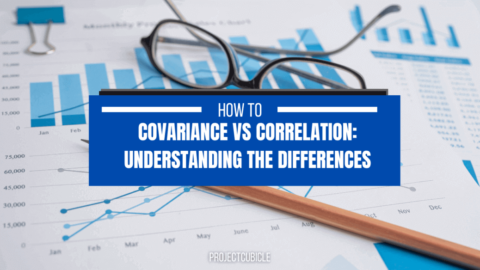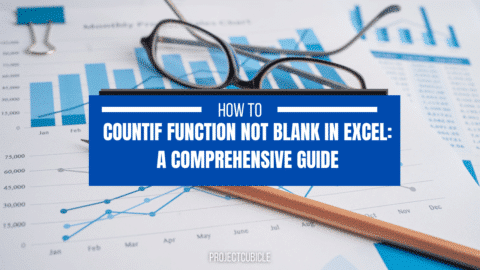Date Range in Excel: An Ultimate Guide
Are you struggling to work with dates in Excel? Don’t worry! Excel provides several data functions and tools to make your life easier. One of the most useful features is the ability to work with date ranges. In this article, we will explore everything you need to know about date ranges in Excel, including how to create, manipulate, and use them in your formulas and charts.
Table of Contents
Introduction
Working with dates in Excel can be challenging, especially when analyzing a large amount of data. One of the most common tasks is to filter data by a specific date range. Excel provides several tools to help you do this, including date filters and pivot tables. However, before you can use these tools, you need to understand how to create and manipulate date ranges.
Understanding Date Formats in Excel
Before we dive into creating date ranges in Excel, it’s important to understand how Excel handles dates. Excel stores dates as serial numbers, with January 1st, 1900 being the first day with a serial number of 1. For example, January 2nd, 1900, would have a serial number of 2. By default, Excel will display dates using the standard format of mm/dd/yyyy.
Creating a Basic Date Range
The most straightforward way to create a date range in Excel is to enter the start date and end date in separate cells, and then drag the fill handle down to autofill the remaining dates in the range. For example, if we wanted to create a date range from January 1st, 2022, to January 31st, 2022, we would enter these dates into separate cells and then drag the fill handle down to autofill the remaining dates in the range.
Customizing a Date Range
Excel also provides a variety of ways to customize date ranges, including formatting dates, specifying start and end dates, and using different units of time.
Formatting Dates
Excel allows you to customize the way dates are displayed in your spreadsheet. To do this, simply select the cells containing the dates you want to format, right-click, and select Format Cells. From here, you can choose from a variety of date formats, including mm/dd/yyyy, dd/mm/yyyy, yyyy/mm/dd, and more.
Specifying Start and End Dates
In addition to manually entering start and end dates, you can also use Excel’s built-in date functions to specify the start and end dates of your date range. For example, the TODAY function can be used to automatically insert the current date as the start date, and the EOMONTH function can be used to calculate the end date based on the start date automatically.
Using Different Units of Time
Excel allows you to use different units of time when creating date ranges. For example, you can create a date range using years, months, or days. To do this, enter the appropriate unit of time into the formula you’re using to create the date range.
Using Date Functions to Create Date Ranges
In addition to the basic techniques we’ve covered so far, Excel also provides a variety of built-in date functions that can be used to create date ranges.
The DATE Function
The DATE function is used to create a date from individual year, month, and day values. For example, the formula =DATE(2022,1,1) would create a date of January 1st, 2022. You can combine the DATE function with other functions to create more complex date ranges.
The EDATE Function
The EDATE function is used to calculate a date a specified number of months before or after a given date. For example, the formula =EDATE(“1/1/2022”,1) would return February 1st, 2022. You can use the EDATE function to create date ranges that are based on months.
The DATEDIF Function
The DATEDIF function calculates the difference between two dates in various units, including years, months, and days. For example, the formula =DATEDIF(“1/1/2022″,”1/31/2022″,”d”) would return 30, which is the number of days between January 1st, 2022, and January 31st, 2022. You can use the DATEDIF function and other functions to create more complex date ranges.
The NETWORKDAYS Function
The NETWORKDAYS function is used to calculate the number of working days between two dates. For example, the formula =NETWORKDAYS(“1/1/2022″,”1/31/2022”) would return 22, which is the number of working days between January 1st, 2022, and January 31st, 2022. You can use the NETWORKDAYS function to create date ranges that are based on working days.
Creating a Date Range in Excel
To create a date range in Excel, you need to specify the start and end dates. There are several ways to do this, depending on your needs:
- Typing the dates directly into cells
- Using the DATE function to create dates based on year, month, and day values
- Using the TODAY and NOW functions to create dates based on the current date and time
- Using the EDATE function to add or subtract months from a given date
Once you have created the start and end dates, you can use them to filter your data or perform calculations.
Manipulating a Date Range in Excel
Excel provides several tools to manipulate date ranges. Here are some of the most common ones:
- Date filters: Excel allows you to filter data based on a specific date range. To do this, select the column containing the dates, click the Filter button, and select the date range you want to filter by.
- Pivot tables: Pivot tables are a powerful tool to summarize and analyze data. You can use them to group data by date range, calculate totals and averages, and more.
- Conditional formatting: Excel allows you to apply different formatting styles to cells based on their values. You can use this feature to highlight cells that fall within a specific date range.
Using a Date Range in Excel Formulas
Excel provides several functions to work with date ranges in formulas. Here are some of the most useful ones:
- DATEDIF: This function calculates the difference between two dates in years, months, or days. For example, =DATEDIF(A1,B1,”d”) calculates the number of days between cells A1 and B1.
- SUMIF/SUMIFS: These functions calculate the sum of values that meet specific criteria. You can use them to sum values that fall within a specific date range.
- COUNTIF/COUNTIFS: These functions count the number of cells that meet specific criteria. You can use them to count cells that fall within a specific date range.
Using a Date Range in Excel Charts
Excel allows you to create charts based on date ranges. Here are some of the most common types of charts you can create:
- Line chart: A line chart is a good choice for showing trends over time. You can plot a series of dates on the x-axis and a corresponding series of values on the y-axis.
- Column chart: A column chart is a good choice for comparing values over time. You can plot a series of dates on the x-axis and a corresponding series of values on the y-axis.
- Scatter chart: A scatter chart is a good choice for showing the relationship between two variables over time. You can plot a series of dates on the x-axis and a corresponding series of values on the y-axis.
Conclusion
Creating date ranges in Excel can be a powerful tool for manipulating data and analyzing trends. By understanding the basic concepts of date formatting and using Excel’s built-in functions, you can create custom date ranges that meet your specific needs. You can also read Excel tutorial articles if you are interested in these posts.
Hello, I’m Cansu, a professional dedicated to creating Excel tutorials, specifically catering to the needs of B2B professionals. With a passion for data analysis and a deep understanding of Microsoft Excel, I have built a reputation for providing comprehensive and user-friendly tutorials that empower businesses to harness the full potential of this powerful software.
I have always been fascinated by the intricate world of numbers and the ability of Excel to transform raw data into meaningful insights. Throughout my career, I have honed my data manipulation, visualization, and automation skills, enabling me to streamline complex processes and drive efficiency in various industries.
As a B2B specialist, I recognize the unique challenges that professionals face when managing and analyzing large volumes of data. With this understanding, I create tutorials tailored to businesses’ specific needs, offering practical solutions to enhance productivity, improve decision-making, and optimize workflows.
My tutorials cover various topics, including advanced formulas and functions, data modeling, pivot tables, macros, and data visualization techniques. I strive to explain complex concepts in a clear and accessible manner, ensuring that even those with limited Excel experience can grasp the concepts and apply them effectively in their work.
In addition to my tutorial work, I actively engage with the Excel community through workshops, webinars, and online forums. I believe in the power of knowledge sharing and collaborative learning, and I am committed to helping professionals unlock their full potential by mastering Excel.
With a strong track record of success and a growing community of satisfied learners, I continue to expand my repertoire of Excel tutorials, keeping up with the latest advancements and features in the software. I aim to empower businesses with the skills and tools they need to thrive in today’s data-driven world.
Suppose you are a B2B professional looking to enhance your Excel skills or a business seeking to improve data management practices. In that case, I invite you to join me on this journey of exploration and mastery. Let’s unlock the true potential of Excel together!
https://www.linkedin.com/in/cansuaydinim/










